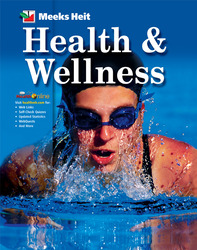
Meeks Heit Health & WellnessUnit 6: Personal Health and Physical ActivityWebQuest ProjectsThe Importance of Exercise for TeensIntroduction Cross training - step aerobics - interval training - weight training - yoga - low-impact - high-impact…we live in an exercise-crazed world. We hear these and other fitness terms all the time, but what is really the best fitness plan for teens? What kinds of benefits does exercise provide? Do you need to have a specific plan or is regular, moderate physical activity of any kind beneficial to your health? In this WebQuest, you will discover the answers to these and other questions through researching the benefits of exercise and learning ways to motivate yourself to be physically active. TaskYour job in this WebQuest is to learn about exercise and the critical importance of physical activity in your daily life. You will explore the many different health benefits of exercise and physical activity, such as strengthening the heart muscle and building muscle strength. You also will investigate many health benefits that you may not have considered before, such as the effect of physical activity on the risk of cancer. After doing your Internet research, you will answer a set of questions. Then, you will make a physical activity plan for yourself. For a period of 3 weeks, you need to set a goal of at least 60 minutes of physical activity per day, which is the recommendation of The President's Council on Physical Fitness and Sports for children and teens ages 6-17. You will record your activities for the day in the chart provided for this WebQuest, and write one journal entry for each week discussing your plan and the results of your physical activities. ProcessBefore beginning your Internet research, read the following questions. As you visit the resource Web sites, look for information that will help you answer the questions.
After conducting your internet research and answering the set of questions above, use what you have learned about exercise and physical activity to make a plan for yourself. You will need to plan at least 60 minutes of physical activity per day for a period of three weeks. Each day, use the chart below to record the type of activities you plan to do, the activities you accomplish, and the amount of time spent on each physical activity. Your plan may include all kinds of different sports, exercises, and physical activities. You may include things that you already do in the course of a day, such as a sports practice. You may plan to walk or jog after school with a friend or family member. You may decide to try an activity that is new to you. Use your research to find new ways to improve your activity level. Activities can (and should) vary from day to day. You may have more than one activity or exercise on the same day, as long as the length of your physical activity equals at least sixty minutes. Choose activities that you enjoy. Your choices are not limited to exercising and sports-related activities. You do not have to have experience with the activities. Try something new and different. The chart includes space for health benefits and for comments or notes about each day's activities. In the Health Benefits column, fill in at least one potential health benefit for each different activity you have for that day. Use the Comments column to record any thoughts you have about a certain activity, if you liked it or not, and how you felt after completing it. After creating your physical activity plan and completing your first seven days of activities, write a short journal entry that discusses your feelings about the assignment, your experiences with each of your activities for the week, and what kinds of benefits you have experienced from your activities during Week 1. Then write two more journal entries, one at the conclusion of each of the next two weeks of activity.
http://www.msnbc.msn.com/id/5933199/ http://www.acefitness.org/fitfacts/fitnessQA_display.cfm?itemid=252 http://www.acefitness.org/fitfacts/fitnessQA_display.cfm?itemid=264 http://www.acefitness.org/fitfacts/fitnessQA_display.cfm?itemid=287 http://www.mcg.edu/news/2002NewsRel/gutin.html http://www.cdc.gov/nccdphp/dnpa/physical/importance/why.htm http://www.cdc.gov/nccdphp/dnpa/physical/recommendations/young.htm http://www.cdc.gov/nccdphp/dnpa/physical/importance/index.htm http://www.fitness.gov/physical_activity_fact_sheet.html
http://www.cdc.gov/nccdphp/dnpa/physical/importance/everyone.htm http://www.cdc.gov/nccdphp/dnpa/bonehealth/bonehealth.htm |  |















